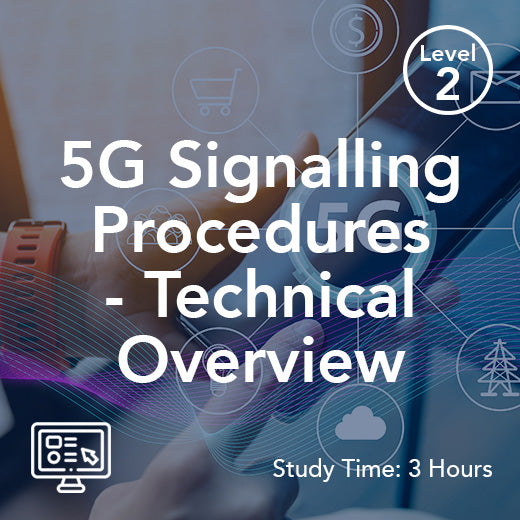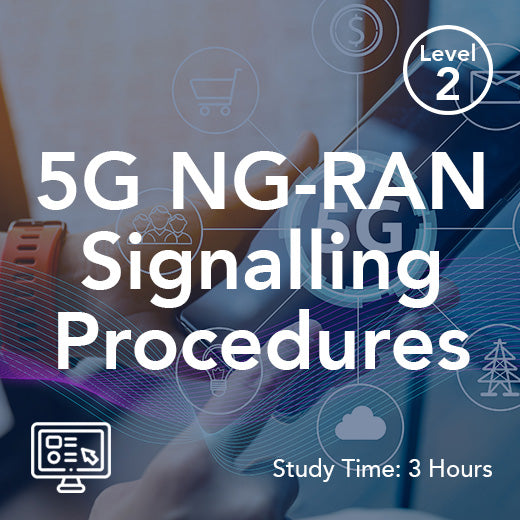What is Base Station Controller? A Simple Guide for Everyone
- , by Stephanie Burrell
- 12 min reading time
In today’s world of mobile communication, the Base Station Controller (BSC) plays a key role in ensuring your phone calls and data transfer happen smoothly. The BSC is a vital part of the network infrastructure that supports wireless communication by connecting and managing multiple base stations within the mobile network.
Acting as a middleman, the BSC manages the radio resources and power levels between your mobile phone and the larger network. As part of the telecommunication infrastructure, BSCs help manage radio signals to facilitate reliable wireless communication. It is crucial in controlling multiple base stations, which are the towers you often see scattered across cities and countryside alike. These controllers help maintain call quality and manage the hand-off process as you move from one cell tower to another. By understanding the BSC’s function, you’ll gain a clearer picture of how mobile networks keep us all connected.
Understanding Base Station Controllers
Understanding the role of Base Station Controllers (BSCs) is crucial for grasping how mobile communication networks operate. BSCs are essential for mobile communications, as they coordinate wireless connectivity and communication between mobile devices and the network.
They act as the central hub for managing connections between mobile devices and network systems, enabling the efficient management of radio resources, power levels, and handovers to optimize network performance.
Basic Role and Function
The main role of a BSC is to control multiple Base Transceiver Stations (BTS), which handle direct communication with mobile phones. A base transceiver station is a key component in the mobile network infrastructure responsible for transmitting and receiving radio signals between the network and user devices. BSCs ensure that resources are efficiently distributed among these stations. They manage radio frequencies, allocate channels, and adjust power levels for optimal signal strength.
Additionally, BSCs are pivotal in overseeing and managing handovers, the process where a mobile connection is transferred from one BTS to another as a user moves geographically. This ensures that calls remain uninterrupted and data connections stable by coordinating the decision-making process involved in handover management.
Moreover, BSCs serve as a bridge, linking the radio network to the core network. This intermediary position allows them to manage traffic and maintain quality standards across the mobile network. BSCs also monitor and maintain signal quality to ensure reliable communication and reduce interference. By managing radio resources, power levels, and load balancing, BSCs contribute to optimal coverage and seamless user connectivity across the service area.
In summary, the key functions of the BSC in mobile networks include managing radio interfaces, overseeing handovers, maintaining signal quality, and ensuring optimal coverage for efficient communication.
Key Components Explained
BSCs consist of several key components that enable their functions. Among them is the Transcoder. This device converts voice data from one format to another, optimising bandwidth usage in the network. The rate adaptation unit, also known as the transcoder or TRAU, is responsible for converting data rates between the mobile network and terrestrial networks, ensuring compatibility and efficient voice transmission.
The Operation and Maintenance Centre (OMC) is another component. It oversees network performance, facilitates troubleshooting, and ensures maintenance tasks are conducted efficiently.
Further, BSCs include controllers that manage radio resources and control signalling processes. These controllers ensure that each BTS operates within its designated parameters, maintaining network integrity. The packet control unit (PCU) is an integral part of the BSC, managing packet data services by processing data, allocating channels, and interfacing with both the BSC and SGSN for flexible deployment within the GSM network.
Lastly, the Switching Subsystem connects calls and data sessions to the core network, facilitating communication between different network parts. The BSC also manages voice channels, optimizing their allocation and quality to ensure reliable communication and high call quality within the cellular network.
Importance in Mobile Networks
The importance of BSCs in mobile networks cannot be overstated. They are fundamental in ensuring reliable and high-quality communication. Among their critical functions are managing radio interfaces, handling call setup, performing handovers, monitoring signal quality, and allocating resources to maintain seamless and dependable mobile communication. Without them, the coordination between BTS and the core network would falter.
BSCs also play a key role in optimising network load, preventing congestion, and ensuring that resources are available where needed. This is vital for maintaining satisfactory user experiences.
Furthermore, they contribute to the scalability of mobile networks. As demand for mobile connectivity grows, BSCs can be adjusted or expanded to accommodate increased traffic.
Base Station Subsystem Overview
The Base Station Subsystem (BSS) is a critical component of mobile telecommunications, acting as the bridge between mobile devices and the core network. At the heart of the BSS are several key components: the Base Station Controller (BSC) and multiple Base Transceiver Stations (BTS). The BSC serves as the central hub, managing and coordinating the activities of several BTS units spread across different locations.
Each BTS is responsible for direct radio communication with mobile devices, while the BSC oversees these stations, ensuring that calls and data sessions are handled efficiently. This setup allows the BSS to facilitate seamless communication between users’ mobile devices and the broader telephone network, supporting everything from voice calls to data traffic.
By managing multiple BTS units, the base station controller BSC ensures that network resources are used effectively, maintaining high service quality and seamless connectivity for users on the move. The BSS, with the BSC at its core, is essential for efficient network operation and is a foundational element in the infrastructure of any mobile telecommunications system.
How Base Station Controllers Work
To grasp how BSCs function, it’s important to understand their role in signal management and interaction with other network components. The BSC is crucial for ensuring seamless connectivity within the network, supporting uninterrupted communication and efficient network management. These operations ensure seamless communication.
Signal Management and Traffic
BSCs are responsible for managing signals between mobile devices and BTS. This involves several steps:
-
Signal Reception: BSCs receive radio signals from mobile devices via the BTS, which is responsible for receiving radio signals and transmitting them to the BSC for further processing.
-
Resource Allocation: They allocate frequency channels and adjust power levels for efficient communication.
-
Traffic Coordination: BSCs monitor traffic patterns and manage data flow to prevent congestion.
This process ensures that signals are clear and connections stable, even in high-demand areas.
Communication with Other Network Parts
BSCs communicate with other network components to maintain overall functionality. They interact with the mobile switching center (MSC), which acts as the core component responsible for managing voice traffic, call setup, and connection management within the mobile network infrastructure.
The mobile switching center serves as a gateway, connecting the Base Station Subsystem (BSS) to the public switched telephone network (PSTN) and the switched telephone network. This integration enables voice traffic to flow between mobile devices and the broader landline telephony system, ensuring seamless communication and connectivity.
Additionally, BSCs work with the Network Management System (NMS) to ensure network health. This involves monitoring performance metrics and addressing any issues that arise.
Moreover, BSCs collaborate with BTS to handle handovers, ensuring that users experience seamless connectivity when moving across different network cells.
Handling Multiple Calls
Handling multiple calls simultaneously is a critical function of BSCs. They achieve this by distributing resources efficiently among BTS and managing network load. The BSC plays a key role in call setup, overseeing and facilitating the process of establishing and maintaining communication connections between mobile devices and the network, especially when handling multiple calls.
BSCs ensure that each call is allocated the necessary bandwidth and frequency channels. They dynamically adjust allocations in response to changing network conditions.
In high-traffic scenarios, BSCs prioritise calls based on factors such as signal strength and user location. This ensures that critical calls are maintained, while less important ones may experience brief delays.
Air Interface Management
Air Interface Management is one of the most important responsibilities of the Base Station Controller (BSC) in a mobile network. The air interface refers to the wireless link between mobile devices and the base station, where all radio communication takes place. The BSC manages this interface by allocating radio channels, controlling power levels, and handling handovers as users move between different cell sites.
Through careful radio channel allocation, the BSC ensures that each mobile device gets the necessary resources for clear voice and data traffic, while minimizing interference from other users. Power control is another key function, as the BSC adjusts signal strength to maintain optimal quality without wasting energy or causing unnecessary interference.
Effective air interface management by the base station controller BSC is crucial for seamless communication, supporting multiple data sessions, and maintaining high network performance. By optimizing the use of available radio resources, the BSC helps deliver reliable, high-quality service to every mobile device connected to the network.
Differences from Other Network Devices
Understanding the distinctions between BSCs and other network devices clarifies their unique role within mobile networks. BSCs, along with BTS and MSCs, are essential components of the overall network infrastructure, which serves as the backbone supporting communication and connectivity in mobile telecommunications systems.
Comparing with Base Transceiver Stations
|
Feature |
BSC |
BTS |
|---|---|---|
|
Function |
Control and manage multiple BTS |
Direct communication with mobile devices |
|
Resource Management |
Allocates channels, power levels, and manages radio spectrum allocation |
Transmits signals to and from mobile devices |
|
Handover Control |
Oversees handovers between BTS |
Executes handovers initiated by BSC |
BSCs and BTS collaborate closely, with BSCs overseeing various BTS to ensure network efficiency, including effective radio spectrum management.
Differences from Mobile Switching Centres
|
Feature |
BSC |
MSC |
|---|---|---|
|
Role |
Manages radio resources and BTS |
Routes calls and data within the core network |
|
Location |
Radio network |
Core network |
|
Function |
Control handovers and signal management |
Connects calls to external networks |
While BSCs focus on radio network management, MSCs handle call routing and connectivity within the core network, illustrating their complementary roles.
Challenges Faced by Base Station Controllers
BSCs encounter various challenges that require careful management to ensure network stability and performance.
Another significant challenge is infrastructure costs. Deploying and maintaining BSCs and related network components can involve substantial financial investment, which must be balanced against the benefits of improved network coverage and capacity.
Common Technical Issues
BSCs may experience technical issues such as signal interference, which affects call quality. This can result from overlapping frequencies or environmental factors.
Another challenge is software glitches, which can disrupt operations. BSCs rely on complex software systems for management, making regular updates and maintenance essential.
Hardware failures pose a risk, too. Components like transcoders or controllers may malfunction, necessitating prompt repairs to prevent widespread network disruption.
Managing Network Load
As mobile networks expand, managing network load becomes crucial. BSCs must adapt to fluctuating demand and ensure efficient resource use.
They achieve this by implementing load-balancing techniques, distributing traffic evenly among BTS. This prevents any single BTS from becoming overwhelmed.
BSCs also optimise resource allocation by dynamically adjusting power levels and frequency channels, ensuring that capacity is maximised without straining the network.
Network Optimization
Network Optimization is a vital function in mobile network management, and the Base Station Controller (BSC) plays a critical role in this process. The BSC is responsible for making sure that network resources—such as radio channels and power—are used as efficiently as possible. This involves dynamic radio channel allocation, smart power control, and effective handover management to keep voice and data traffic flowing smoothly.
By optimizing how resources are distributed among multiple Base Transceiver Stations (BTS), the BSC helps reduce operational costs and improve overall network efficiency. Techniques like load balancing and frequency allocation allow the BSC to prevent congestion, ensuring that no single BTS is overloaded and that mobile devices experience seamless connectivity.
The base station controller BSC’s network optimization capabilities are essential for maintaining high service quality, supporting efficient data transmission, and adapting to changing network demands. This not only enhances the user experience but also ensures that the mobile network can scale and perform reliably as more devices connect and data traffic increases.
Future of Base Station Controllers
The future of BSCs is shaped by emerging technologies and evolving network demands. Their adaptation will play a crucial role in the development of mobile networks.
Evolution with 5G Technology
With the advent of 5G technology, BSCs are evolving to support higher data rates and increased connectivity. This requires enhancing their capacity and integrating with 5G infrastructure.
BSCs will need to manage a larger number of BTS, as 5G involves more cell sites with smaller coverage areas. This necessitates improved coordination and resource management.
Additionally, BSCs will play a role in enabling new 5G features like network slicing, which allocates network resources based on specific service needs.
Potential Improvements and Upgrades
Future improvements for BSCs involve enhancing their processing power and efficiency. This includes upgrading hardware components and optimising software algorithms.
Moreover, BSCs may benefit from increased automation, reducing the need for manual intervention in network management.
Implementing advanced analytics tools could further improve BSC performance by providing real-time insights into network conditions and facilitating proactive decision-making.

































